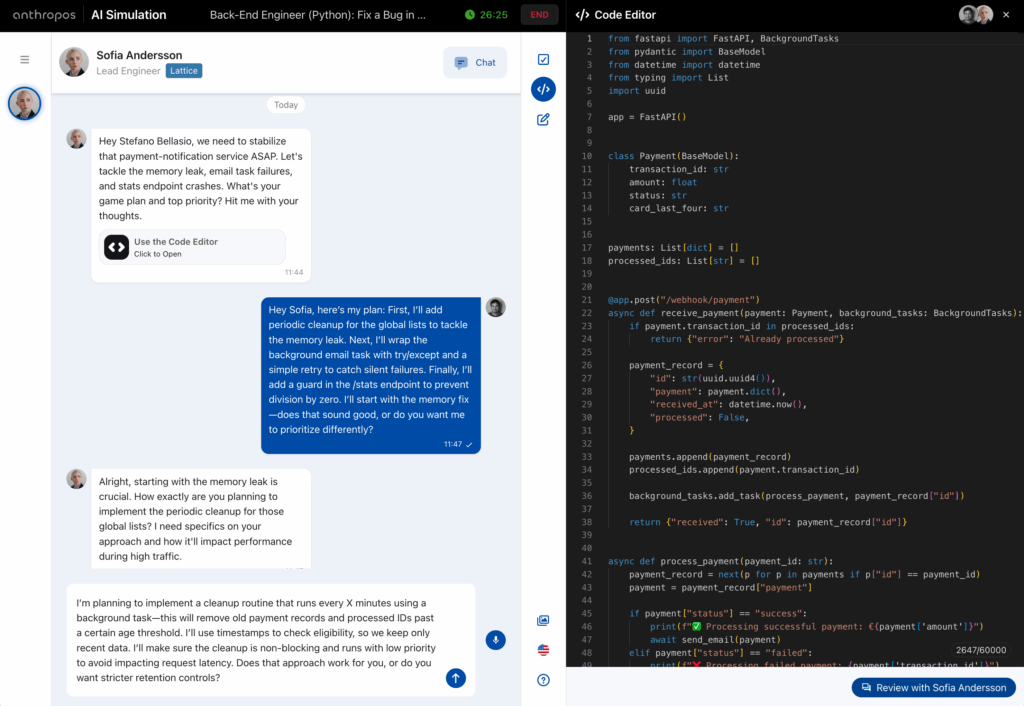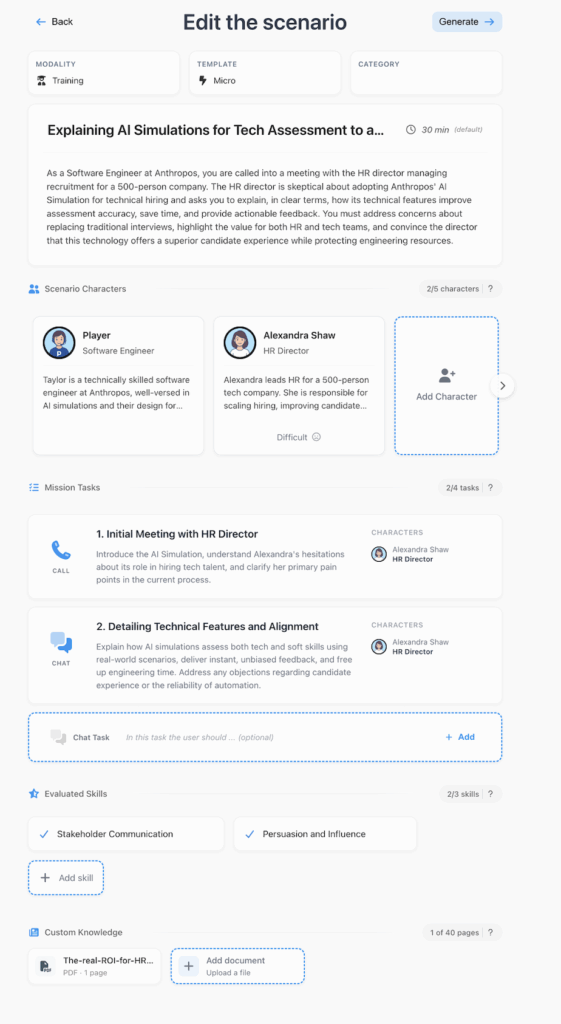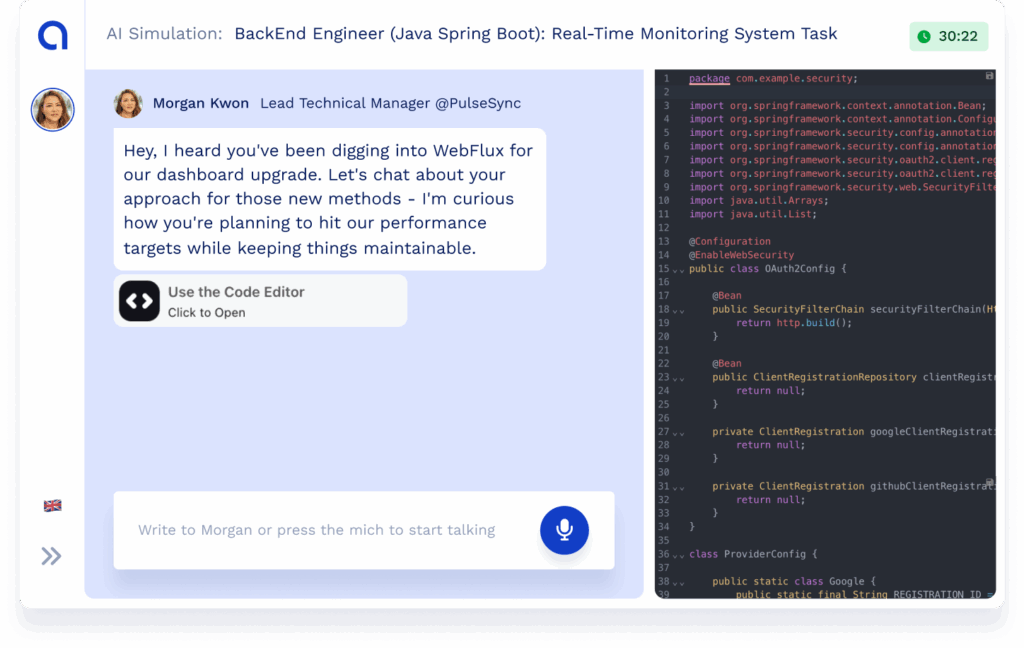Hiring the right software engineer is just the beginning. Today that means finding someone that has great coding skills but also the ability to pick up Cursor, Claude Code or other AI-based solutions to make their productivity 2x/3x the one of a normal engineer.
Still, it doesn’t change the fact that once they’re in, the pressure shifts from technical skills assessment to enablement: how fast can they ramp up? How well can they adapt to your codebase, tech stack, and team dynamics? Can they evolve as the business evolves? Will they understand the product and customers’ needs?
In today’s product-led organizations, technical teams aren’t just expected to build—they’re expected to learn continuously, solve unfamiliar problems, and contribute beyond their core technical domain. Most of the times – especially for AI businesses – this means having the ability for engineers to truly understand the domain their products operate in, the problem they solve for customers and how they can use their skills to make it even a better market fit.
Unfortunately, most companies treat hiring and development as separate systems. New hires are onboarded with documentation, maybe paired with a buddy, and left to learn on the job through trial and error. The result? Slow onboarding, uneven productivity, and a missed opportunity to accelerate impact.
The truth is: if you’re not supporting your developers after hiring, you’re not maximizing their potential. And you’re exposing your business to delays, rework, and avoidable attrition. Especially in fast-moving software teams, learning by doing isn’t just an ideal—it’s a requirement.
The Limits of Traditional Developer Training for Software Engineer’s Skills Improvement
Technical upskilling is critical, but many companies still rely on outdated models: e-learning libraries, static documentation, or one-size-fits-all bootcamps. In most organizations I’ve seen and worked with during my career they buy Udemy Business, LinkedIn Learning, Pluralsight, Cloud Academy (which I know something about, I founded it!) but those tools tend to be something of the past in today’s world. Things move too fast to expect your engineers to watch hours of videos and most of them still prefer to learn by doing things. Even at Cloud Academy we saw that issue and created hands-on labs to let engineers and cloud professionals learn by doing things in a real environment.
Today, developing your software engineers skills means having them truly understand your business, make their onboarding (e.g. understanding how to deploy code in your env or interact with the rest of the organization) hands-on and provide a clear path to learn skills that will make thrive in their organization. I am talking soft and hard skills.
There are mainly three issues with the methods and products mentioned at the beginning here:
-
They’re not contextual. Generic video tutorials don’t reflect the complexity of your real tech stack or product requirements.
-
They’re passive. Watching content doesn’t help developers actively practice what they’re learning or receive meaningful feedback.
-
They’re disconnected from work. The training feels like a separate activity—something to be done outside of real development cycles.
This is especially problematic for junior and mid-level engineers, who often struggle not with raw technical skills but with the confidence to apply them in ambiguous, high-stakes environments.
Knowing JavaScript isn’t the same as refactoring a React app under a looming deadline. Knowing how to write code doesn’t mean knowing how to navigate your CI/CD pipeline or collaborate effectively in a sprint review.
Traditional tools simply don’t close the gap between knowledge and readiness, and that’s where simulation-based learning makes a meaningful difference.
How Anthropos Bridges Learning and Doing
Anthropos’s AI-powered simulations let you take the same philosophy you used for hiring—assessing real-world skills in real-world conditions—and apply it to post-hire development.
Whether you’re onboarding a new backend engineer or reskilling a front-end developer into a full-stack role, Anthropos gives you the tools to simulate the actual challenges they’ll face on the job. That includes debugging production-level issues, collaborating with virtual team members, explaining architectural choices, or adapting to evolving requirements.
Engineers are placed in scenarios where they’re not just writing code, but working with AI stakeholders—product managers, tech leads, QA testers—who interact with them dynamically. The result is not only a test of skill but a powerful training environment that reflects the pressures and decisions of real engineering work.

These simulations can be fully customized to reflect your stack, your architecture, and your processes.
Want to train developers to work with GraphQL APIs and explain trade-offs to a business stakeholder? You can simulate that. Need your devs to understand how to handle customer feature requests through Jira tickets and sprint planning?
Anthropos makes that scenario part of their onboarding.
Teaching the right sales and soft skills to your software engineers
In my experience even the best engineers lack soft skills that are somehow given for granted in other roles.
Some examples:
- They fear customer meetings: because they rarely see them, they don’t know if they can say something or answer a question. When in fact customers would absolutely love to hear from them and rely on their knowledge.
- They don’t ask questions about the business: in most cases they have been taught that’s not their … business. But it is and in today’s world the best engineers understand the customers’ problems, the competitive landscape and can really improve their software due to that.
- Presentation and public speaking could help them sell more: but nobody ever trained them on how to present a roadmap, a slide or just explain what their technology can do for customers.
- They look at sales and customer success teams as distant cousins: when in fact they should be more like brothers and sisters and great engineers can truly accelerate sales and customer success results collaborating closely with those departments.
With AI Simulations we created a tool for engineers to practice all of that and more. They can talk to potential customers, collaborate with sales and customer success and get immediate feedback on how well they did it. All of it in fully customized AI Simulations that talk about your company and product, so nothing is left to general skills and training. One of our customers, FIDES, has used AI Simulations exactly for this: they trained more than 300+ engineers on how to work with project managers, how to talk to sales and truly understand some of their most common industry, like pharmaceutical customers.
Anthropos Studio is the solution our clients use to create personalized Simulations. It’s powerful because you can upload presentations, product data sheet and really anything else that describes your product/service or your processes and build AI Simulations that test/teach your software engineers how to talk about it, how to interact with other departments etc.
See an example below on how to build a custom AI Simulations to train your software engineers on sales and soft skills: I am creating an AI Simulations that helps software engineers in our team to present AI Simulations to potential HR leaders and they ask questions – technical and non technical. This is incredibly powerful to get them close to your business needs and do that from the day they start onboarding in your organization.

Software Engineers’ Skills Improvement: Faster Onboarding, Smarter Upskilling
One of the most immediate benefits of simulation-based development is speed.
With Anthropos, new hires can ramp up in days—not weeks—because they’re not just reading docs. They’re doing the job in a safe, controlled environment, and receiving structured feedback along the way.
This approach also works for ongoing upskilling and cross-training. As your team adopts new technologies, shifts toward new architectures (like microservices), or takes on new responsibilities (like DevOps or security ownership), Anthropos allows you to prepare them with hands-on experience before those changes hit production.
Managers can also use simulation data to identify learning gaps early—before they impact delivery or quality. You can see where engineers hesitate, how they structure solutions, or whether they’re asking the right questions when requirements change. This helps you tailor support without micromanagement, and create learning paths based on behavior, not assumptions.
Keeping Technical Skills Relevant in an AI-Augmented World
The rapid rise of AI is changing how developers write code, debug, and solve problems. Tools like GitHub Copilot and ChatGPT are now part of the daily workflow for many engineers—but they also introduce a new challenge: how do you assess candidates and improve skills in a world where AI can fill in the gaps?
Anthropos embraces this change instead of resisting it. Every simulation can track how developers interact with external LLMs—whether they use them, how often, and how thoughtfully. Instead of penalizing AI use, Anthropos lets managers see whether their teams are using AI effectively and responsibly, which is quickly becoming a must-have skill in modern software development.

Over time, you can observe how individual developers evolve their interaction with AI: are they copy-pasting without understanding, or are they using AI as a tool to augment better decisions and cleaner code?
This kind of visibility is simply not possible with passive learning tools or abstract skill assessments. But it’s essential if you want to future-proof your team.
Building a Culture of Continuous Readiness
The best engineering teams aren’t just technically sharp. They’re adaptive. Curious. Collaborative. They know how to turn business needs into working software—and how to keep improving even after years on the job.
Anthropos supports this mindset by making learning a core part of the developer experience, not a side activity. When simulations are part of your onboarding, your promotion process, or your upskilling program, you create a culture that rewards growth, not just delivery.
Developers appreciate the clarity and fairness. Managers appreciate the data and structure. And the business benefits from faster time-to-impact, stronger cross-functional collaboration, and lower attrition from frustrated or underprepared engineers.
A Smarter Way to Grow Engineering Talent
Hiring great engineers is hard—but enabling them to thrive is harder. That’s why forward-looking teams are rethinking their learning and development strategy around realism, relevance, and readiness.
Anthropos brings simulation technology to every stage of the engineering journey—from pre-hire assessments to post-hire development. With a single platform, you can reduce onboarding time, spot skill gaps early, and help your team grow into the challenges your business is about to face.
If you’re serious about turning your engineering team into a long-term competitive advantage, you can’t afford to rely on outdated learning models or hope developers figure it out as they go. You need a system built for how modern engineers learn, work, and grow. And with Anthropos, that system is already here.
Stefano Bellasio, founder and CEO at Anthropos Inc.
It may also interest you
November 19, 2025